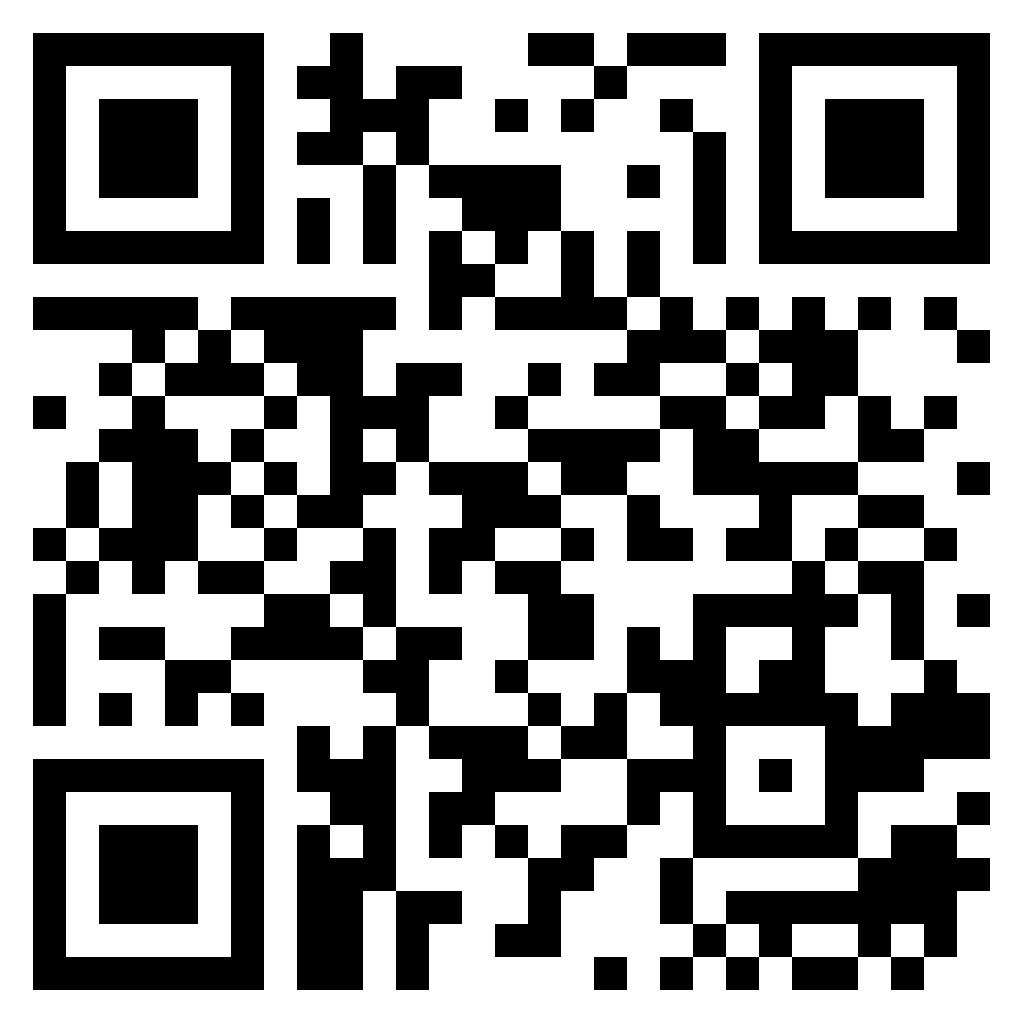

Conducting Fair and Thorough TraumaInformed Investigations
August 2022
Chantelle Cleary Botticelli, J.D.


August 2022
Chantelle Cleary Botticelli, J.D.

We exist to help create safe and equitable work and educational environments.
Bring systemic change to how school districts and institutions of higher education address their Clery Act & Title IX obligations.


• Responsive Partnership
• Innovation
• Accountability
• Transformation
• Integrity



Meet Your Facilitator


Chantelle Cleary Botticelli, J.D.
She/her/hers
Director of Strategic Partnerships and Client Relations
Chantelle Cleary Botticelliis a nationally-recognized subject-matter expert in Title IXand related fields. She has more than 15 years of experience in the investigationandadjudicationof sexual and interpersonal violence. She lectures extensively atuniversities and conferencesthroughout the U.S. onTitle IX, VAWA, harassment, and implementation of best and emerging practices. Prior to joining Grand River Solutions, Chantelle served as the Directorfor Institutional Equity andTitleIX at CornellUniversity, and beforethat as theAssistant VicePresident forEquity and Compliance and Title IX Coordinator at the University atAlbany. In these roles, she provided direct, hands-on experience in the fields of TitleIX, civil rights, employmentlaw, and workplace and academic investigations. Her responsibilitiesincluded focusing on diversity efforts,sexualassault prevention andtraining, affirmativeaction, and protectingminors on campus.



Investigative Interviews: Part 1 GRANDRIVERSOLUTIONS
Title IX’s Requirements




The Proper Application of Trauma Informed Practices
The Importance of Understanding the Potential Impact of Trauma
Developing an Investigative Strategy




Title IX of the Education Amendments Act of 1972
"No person in the United States shall, on the basis of sex, be excluded from participation in, be denied the benefits of, or be subjected to discrimination under any education program or activity receiving Federal financial assistance.” 20 U.S.C. § 1681 (1972).

1. Narrows the definition of sexual harassment;
2. Narrows the scope of the institution's educational program or activity;
3. Narrows eligibility to file a complaint;
4. Develops procedural requirements for the investigation and adjudication of sexual harassment complaints, only.


Type of Conduct
• Hostile Environment
Sexual Harassment
• Quid Pro Quo
• Sexual Assault
• Dating/Domestic Violence
• Stalking


Ed Program or Activity

• On campus
• Campus Program, Activity, Building, and
• In the United States


• Complainant is participating or attempting to participate in the Ed Program or activity

Required Identity Required Response: Section 106.45 Procedures Apply 106.45 Procedures
• Institution has control over Respondent




Equal opportunity to present evidence
An advisor of choice
Written notification of meetings, etc., and sufficient time to prepare Opportunity to review all directly related evidence, and 10 days to submit a written response to the evidence prior to completion of the report
Report summarizing relevant evidence and 10 day review of report prior to hearing

Notice of the allegations, including sufficient details known at the time and with sufficient time to prepare a response before any initial interview. Sufficient details include: the identities of the parties involved in the incident, if known, the conduct allegedly constituting sexual harassment under § 106.30, and the date and location of the alleged incident, if known.
The written notice must include a statement that the respondent is presumed not responsible for the alleged conduct and that a determination regarding responsibility is made at the conclusion of the grievance process.
The written notice must inform the parties that they may have an advisor of their choice, who may be, but is not required to be, an attorney, under paragraph (b)(5)(iv) of this section, and may inspect and review evidence under paragraph (b)(5)(vi) of this section.
The written notice must inform the parties of any provision in the recipient’s code of conduct that prohibits knowingly making false statements or knowingly submitting false information during the grievance process


The advisor can be anyone, including an attorney or a witness.
Institutions cannot place restrictions on who can serve.
Institutions can create rules and guidelines for participation in the investigation
No specific training required.



Written Notification of Meetings and Sufficient Time to Prepare



Parties must have equal opportunity to inspect and review evidence obtained as part of the investigation that is directly related to the allegations raised in a formal complaint.

10 days to provide a written response.



After reviewing and considering the comments on the evidence, the investigator will generate a report that summarizes the relevant evidence.

That report will be shared with the parties and the parties will have another opportunity to respond in writing.

The hearing must occur at least 10 days after the release of the final report.


Regulations do not define “Directly Related” Evidence.
Preamble states it should be interpreted using its plain and ordinary meaning.
Term is broader than:
• “all relevant evidence” as otherwise used in Title IX regulations, and
• “any information that will be used during informal and formal disciplinary meetings and hearings” as used in Clery Act
Includes evidence upon which the school does not intend to rely in reaching a determination regarding responsibility and inculpatory or exculpatory evidence whether obtained from a party or other source.

The Department declines to define “relevant”, indicating that term “should be interpreted using [its] plain and ordinary meaning.”
See, e.g., Federal Rule of Evidence 401 Test for Relevant Evidence:
“Evidence is relevant if:
• (a) it has any tendency to make a fact more or less probable than it would be without the evidence; and
• (b) the fact is of consequence in determining the action.”

“Questions and evidence about the complainant’s sexual predisposition or prior sexual behavior are not relevant,
• unless such questions and evidence about the complainant’s prior sexual behavior are offered to prove that someone other than the respondent committed the conduct alleged by the complainant, or
• if the questions and evidence concern specific incidents of the complainant’s prior sexual behavior with respect to the respondent and are offered to prove consent.”
“require, allow, rely upon, or otherwise use questions or evidence that constitute, or seek disclosure of, information protected under a legally recognized privilege, unless the person holding such privilege has waived the privilege.”
Physical and mental health records and attorney-client privileged communications would fit within scope of this prohibition.


Department emphasizes repeatedly in Preamble that investigators have discretion to determine relevance at this stage of the process.
• Subject to parties’ right to argue upon review of “directly related” evidence that certain information not included in investigative report is relevant and should be given more weight.

Investigators will have to balance discretionary decisions not to summarize certain evidence in report against:
• Each party’s right to argue their case, and
• Fact that decisions regarding responsibility will be made at hearing, not investigation stage.





Can be the Title IX Coordinator, although that is disfavored.
The Investigator may not be a decision maker.

Must be trained in accordance with the requirements in the regulations.

Must conduct the investigation in an impartial manner, avoiding bias/pre-judgment, and conflicts of interest.



The grievance process must require that any individual designated by the recipient as Title IX Coordinator, investigator, decision maker, or facilitator of informal resolution not to have a conflict of interest or bias

1. For or against complainants or respondents generally, or
2. An individual complainant or respondent



Conduct a fact-specific, objective inquiry based in common sense to determine bias.
Includes:
• Decision-making that is grounded in stereotypes
• Different treatment based on a person’s sex or other protected characteristic
• A decision based on something other than the facts


Making a decision, determination, or finding that is based on something other than the evidence and specific facts of the case.





Requires that the Title IX professional refrain from making a judgement on individual facts, the allegations, or whether a policy violation occurred until they have had the opportunity to consider all of the evidence.

Not influenced by bias or conflict of interest.

Committed to decisions based on an objective view of the facts and evidence as you know them and as they evolve.
Truth seeking, not ”your truth” confirming.

In the preamble, the Department permits the use of trauma informed practices and recognizes that trauma informed practices can be used in an impartial and non-biased manner.
Trauma informed practices must be applied equally to all genders.




Trauma informed practices provide tools/techniques for interviewing and engaging with the Complainant, Respondent, and Witnesses.
Format/Structure of the Interview


Format of Questions

Approach to Clarification



It is a misapplication of trauma informed principles to allow potential evidence of trauma to:
1. Influence the interpretation of a specific item of evidence;
2. Substitute for missing evidence;
3. To serve as a justification for not doing a full and thorough investigation;
4. Cause a biased belief in the veracity of one or more party.





An event that is experienced as terrifying, horrifying, or threatening and that is coupled with an actual or perceived lack of control.


Sexual Assault

Physical Assault by a Stranger

Physical Assault by an Intimate Partner

Accident that causes serious injury or death Robbery

A Car Accident


Significant medical event



Inconsistent
Non-linear
Fragmented
Lack of detail
New information
Affect is unexpected



Historically, the seemingly inconsistent behaviors that frequently accompany disclosures of sexual assault and interpersonal violence resulted in the belief that the victim was being dishonest.

Inconsistencies
Inconsistencies
Lack of Detail
Lack of Detail
Non-Linear Fragmented New Information
Non-Linear Fragmented New Information


Not Credible



False Report Regretted Sex Not Provable Investigation CLOSED



When an investigator uses “trauma informed” tools, they are less likely to:
CAUSE ADDITIONAL HARM JEOPARDIZE FUTURE REPORTING GRANDRIVERSOLUTIONS

CONCLUDE, WITHOUT A THOROUGH INVESTIGATION, THAT THE REPORTING INDIVIDUAL IS NOT CREDIBLE
ASK QUESTIONS OR MAKE DECISIONS FOUNDED IN BIAS
An understanding of trauma and its potential impact should encourage investigators to keep an open mind, and it should prevent investigators from immediately interpreting seemingly inconsistent behaviors with deception. An understanding of trauma provides another explanation for these seemingly inconsistent behaviors.
This is essential to a fair and thorough investigation.

When presented with the following characteristics in a disclosure,


An investigator who understands trauma will....


Continue their investigation.



Essential Steps of an Investigation

Review Notice of Allegations and Formal Complaint





Initial Interviews
Evidence Collection
Evidence Review
Additional Evidence Collection/Follow Up Interviews
Report Writing

Review the Notice of Allegations and the Formal Complaint
Ask questions if unsure

Identify the Claims and What Needs to be Proven
• What will the decision maker be asked to decide?
• What does the formal complaint allege?
• What are the elements of each act of prohibited conduct alleged?

Rape. The penetration, no matter how slight, of the vagina or anus, with any body part or object, or oral penetration by a sex organ of another person, without the consent of the victim.
1. Did Respondent penetrate Complainant’s vagina or anus?
2. Without Complainant’s affirmative consent?
1. What is the ground for lack of consent
1. Did respondent fail to seek and obtain Complainant’s affirmative consent?
2. Did Respondent force Complainant?
3. Did Respondent coerce Complainant?
4. Was Complainant incapacitated and therefore incapable of consent?

Stalking. Engaging in a course of conduct directed at a specific person that would cause a reasonable person to: Fear for the person’s safety or the safety of others; or Suffer substantial emotional distress.
1. Did Respondent engage in a course of conduct?
2. Was that course of conduct directed at Complainant?
3. Would Respondent’s conduct cause a reasonable person to either
1. Fear for their safety or the safety of others, or
2. Suffer substantial emotional distress


Receive Report

Develop a timeline

Identify Witnesses

Identify Potential Evidence

Develop Strategy to Collect Evidence

• Between the Parties?
• Of the Parties?
• Consent?
• Type of Contact?
• Injuries?
Pre-Incident
• Communications?
• Interactions?
• Conduct?
Post Incident
• Behaviors?
• Communications?





Connect
Build rapport
Build trust Empower
Listen
Allow interviewee to share their experience
Clarify
Understand what you have heard
Seek additional information
Evidence
Preservation
Text Messages
Photographs Names and contact info for witnesses


Secure an appropriate meeting location



Allow for enough time to conclude the meeting


If interviewing a party, inform them of their right to have an advisor present.


Prepare for the meeting

Provide Written Notice of the Meeting
Areas of focus?
Other evidence?
Go back review what you have

Advise the parties/witnesses that you will be collecting evidence

What they should expect of you
• That you are neutral
• That you will listen, what they are saying is important to you
• That you will keep the information they share private
• What you will do with recording/notes
• That you may have to ask difficult questions
• Patience, respect, and appreciation
• This will not be their only opportunity to speak with you
• Prepare the parties for follow up interviews and the “shift”
What you expect of them
• Honesty
• That they will seek clarity if needed (give them permission to do so)
• That they wont guess or fill in blanks
Build Rapport and Trust? Empower?


Exhibiting Expertise
Clear Introduction
Exhibiting Empathy
Preparedness

Duration
Permission to ask questions
Space
Clear Expectations
Permission to seek clarity

Start by eliciting a narrative




Listen Interview for clarification



Listen



Avoid leading questions, questions that blame; interrogating

Start the interview by eliciting a narrative…

Help me understand your experience?
What are you able to tell me about your experience?


Start where you are comfortable and share what you are able to remember.

Allow the person to speak uninterrupted. This takes patience.


Next, ask questions that are intended to clarify and more deeply explore the information and details provided by the person in their narrative.
Do Ask:
• Interview for clarification
• Help me understand?
• Can you tell me more about…?
• Is there anything else you can share about…?
Avoid:
• Interrogation
• Questions that blame
• Questions that imply doubt
• Leading questions


• Ask about the physical and emotional reactions to the incident.
• Conclude with very open-ended questions:
• What was the most difficult part of this experience for you?
• Is there something that stands out/that you just can't stop thinking about?
• Is there anything more that you would like me to know?
At some point during the interview, it is also important to explore the prior history, if any, between the complainant and the respondent, and the history of the parties, individually.




• The parties’ psychological reactions
• Changes in behavior
• Witnesses to the psychological reaction
• “Has anyone expressed concern about you since the assault?”
• Communication/contact between the complainant and respondent GRANDRIVERSOLUTIONS
It is also important to explore the events following the incident. Oftentimes, the best evidence is produced after the incident.

Meet Your Facilitator


Pari Le Golchehreh
She/her/hers
Senior Solutions Specialist
Pari Le Golchehreh is a Senior Solutions Specialist at Grand River Solutions and has extensive experience in Title IX and Equity work on college campuses. Prior to joining Grand River, Pari served as the Equity and Title IX Office’s Lead Investigator at California Institute of Technology where she developed a deep expertise in leading investigations, trained campus community members, and facilitated mediated conversations and remedy-based resolutions. Pari is a certified mediator, and is skilled in aiding parties to resolve disputes in a trauma informed and collaborative manner.




Evidence Collection and Assessment

The Investigative Report and Record




Explain your questions, especially the difficult ones.
Do not ask leading questions.
How much did you drink? What they hear: this is your fault because you were drinking.
Watch your tone.
Do not rush.
LISTEN!!!!!!!!!
Pay attention to and document information that might lead to additional evidence.
Document questions asked. Especially when a response is not provided.




Discuss submission of evidence.


Explain statement review process.


Explain next steps in the process.


Keep the lines of communication open.

Review available support, privacy requirements, and prohibition against retaliation.

Memorialize the Interview in writing. Notes Summary Transcript
Provide opportunity for the party or witness to review it.
Provide opportunity for party or witness to provide a response.
Incorporate the response.
The reader of any report should not know of the investigator’s presence in the report; for example, report should not say “I then asked . . .”
Use interviewee’s words and put the words in quotes if it is their words
Avoid conclusory words, or words that suggest that the investigator has an opinion about the information offered

Is there something you missed or forgot to ask?
Do you need clarity on any of the information shared?
Has this interview revealed additional evidence that you want to explore or collect?
Has evidence of additional policy violations been shared?



Seek clarification



Explore inconsistencies

Explore contradictory evidence

Explore difficult issues



Opportunity to respond

1

Explain the purpose of the follow up.

2

3

4
Set the stage for the topics you will be covering.
Prepare the interviewee for “the shift.”
Do not avoid asking the hard questions.


Details about the sexual contact



Seemingly inconsistent behaviors

Inconsistent evidence/information



What they were wearing



Alcohol or drug consumption
Probing into reports of lack of memory


Lay a foundation for the questions.
• Explain why you are asking it
•Share the evidence that you are asking about, or that you are seeking a response to
Be deliberate and mindful in your questions:
•Can you tell me what you were thinking when….
•Help me understand what you were feeling when…
• Are you able to tell me more about…

Caseyand I have beenfriends for a few weeks. On Fridaynight, we were hanging out alone in my room, watching a movie. We started to make out, and I was okwith that. After making outfor a while, Casey started touchingme down there. ThenCasey tried to have sexwith me. Casey knewthat Ididn’t want to have sex but kept trying anyway. Casey was being really coercive, and so I just went along with it.Casey rapedme and I wantCasey to be heldaccountable.




WhenI gottothe party,I was already lit.Ikept letting Marc get me drinks anyway. At somepoint, I just kinda don’t remember anything. And then I woke up in Marc's bed and it was morning.I had all my clothes on, butI know someone had sex with me.I could feel it.I just wanted to go, so I did.BeforeIleft Marc wokeup and triedtotalkto me butI wasn’t hearingit. He lookedguilty and I couldtell he felt bad


Pat and I have been together forabout a month and have been intimate forthelasttwoweeks.We went outwith myfriends onfriday nightand Patgot really drunk. At somepoint we ran into myex andPatwas really jealous,so we left.When we got back to my place,I thought things were fine.We started hooking upand all of asudden Pat'smood changed. Pat got reallyaggressive andchoked me. He was so angry and I was soscared.





“Something (including testimony, documents, tangible objects) that tends to prove or disprove the existence of an alleged fact; anything presented to the senses and offered to prove the existence or nonexistence of a fact.”
Black’s Law Dictionary

• Evidence that is based on personal knowledge or observation and that, if true, proves a fact without inference or presumption.
• Evidence based on inference and not on personal knowledge or observation.
Corroborating Evidence
• Evidence that differs from but strengthens or confirms what other evidence shows
Black’s Law Dictionary




Testimony Text Messages Social Media







Posts and messages Emails





Surveillance Videos Photographs Police Body Camera Footage


Swipe Records Medical Records


Phone Records





Audio Recordings


Identify the items of evidence that you would like to obtain. Develop an intentional strategy for obtaining that evidence.
Overcome barriers to evidence collection. Considerations about collecting certain types of evidence.


A Thorough Investigation is more than evidence collection

Is it relevant?
Is the evidence important, or of consequence, to the fact-finding process?
Is it authentic?
Is the item what it purports to be?
Is it credible/reliable?
Is the evidence worthy of belief and can the decision maker rely on it?
What weight, if any, should it be given?
How important is the evidence to the fact-finding process?



The Department declines to define “relevant”, indicating that term “should be interpreted using [its] plain and ordinary meaning.”
See, e.g., Federal Rule of Evidence
401 Test for Relevant Evidence:
“Evidence is relevant if:
• (a) it has any tendency to make a fact more or less probable than it would be without the evidence; and
• (b) the fact is of consequence in determining the action.”


“Questions and evidence about the complainant’s sexual predisposition or prior sexual behavior are not relevant,
• unless such questions and evidence about the complainant’s prior sexual behavior are offered to prove that someone other than the respondent committed the conduct alleged by the complainant, or
• if the questions and evidence concern specific incidents of the complainant’s prior sexual behavior with respect to the respondent and are offered to prove consent.”
“require, allow, rely upon, or otherwise use questions or evidence that constitute, or seek disclosure of, information protected under a legally recognized privilege, unless the person holding such privilege has waived the privilege.”
Physical and mental health records and attorney-client privileged communications would fit within scope of this prohibition

Unsure about the relevance about a particular item of evidence? Ask the person who has proffered it.
Character Evidence
Polygraph evidence
Opinion Evidence



You are investigating an allegation that Casey had sex with Taylor when Taylor was incapacitated. You interview several witnesses, one of whom made the following statement:
“I got to the party pretty late, and Taylor was already lit.”
“Taylor was wasted. Like totally messed up. There is no way they could have given permission for sex”

Never assume that an item of evidence is authentic.
Ask questions, request proof.
Investigate the authenticity if necessary.



QUESTION THE PERSON WHO OFFERED THE EVIDENCE HAVE OTHERS REVIEW AND COMMENT ON AUTHENTICITY
REQUEST ORIGINALS

OBTAIN ORIGINALS FROM THE SOURCE
ARE THERE OTHER RECORDS THAT WOULD CORROBORATE?
No formula exists, but consider the following:
Opportunity to view
Ability to recall
Motive to fabricate
Plausibility
Consistency
Character, background, experience, and training





Non-Participating Parties

Uncooperative Witnesses


Uncooperative Advisors


Identity of party or witness unknown


Refusal to share materials


Materials lost or no longer accessible



Difficult topics




At the conclusion of the investigation, we must create an investigative report that fairly summarizes relevant evidence.



Relevant Evidence
• “Evidence is relevant if:
• (a) it has any tendency to make a fact more or less probable than it would be without the evidence; and
• (b) the fact is of consequence in determining the action.”
Irrelevant Evidence
• Prior sexual history of complainant, with two exceptions
• Legally recognized and unwaived privilege.
• Records related to medical, psychiatric, psychological treatment


Department emphasizes repeatedly in Preamble that investigators have discretion to determine relevance
• Subject to parties’ right to argue upon review of “directly related” evidence that certain information not included in investigative report is relevant and should be given more weight
Investigators will have to balance discretionary decisions not to summarize certain evidence in report against:
• Each party’s right to argue their case, and
• Fact that decisions regarding responsibility will be made at hearing, not investigation stage



Share the report with the parties and their advisors

In electronic format or hard copy

At least 10 days prior to the hearing

To allow for advance Review
To allow for advance Preparation
• By the Decision Maker
• By the Parties
Reduce likelihood of bias in final outcome




The Decision Maker











Essential Elements
GRANDRIVERSOLUTIONS
Intentionally organized to enhance comprehension
Factually accurate
Concise
Without editorial or opinion
Consistent format




Compilation of the evidence organized intentionally and consistently Divided into Appendices Is attached to the report
Includes a procedural timeline


Appendix A
Contains all of the party/witness testimony (e.g., transcripts, statements summaries, etc.) that the investigator deems relevant
Appendix B
Contains all of the documentary evidence (e.g., text messages, SANE reports, photographs, etc.) that the investigator deems relevant
Appendix C
Contains the remaining evidence deemed irrelevant by the investigator, but that is directly related to the allegations in the formal complaint
Appendix D
The procedural timeline




Overview of the Investigation
Statement of Jurisdiction
Identity of Investigators
Objective of the Investigation and the Investigation Report
Prohibited Conduct Alleged
Witnesses
Evidence Collected
Summary of Evidence
Conclusion


In this section, provide a very brief overview of the case. Include:
• the names of the parties,
• the applicable policy(ies)
• the prohibited conduct alleged,
• the date, time, and location of the conduct,
• a brief description of the alleged misconduct




1. Cite Jurisdictional Elements
2. State all grounds for Jurisdiction

Identify Investigators

1. Identify the investigators by name

2. Investigator's training belongs in file, not in report


1. This language should mirror the language in your policy or procedures.
2. State the objective of the investigation

3. Briefly state that all procedural steps were followed
4. Describe the purpose of the report.



1. List the allegations of prohibited conduct in the formal complaint.


2. Include definitions of prohibited conduct from institution’s policy/procedures.


List those witnesses that were interviewed

List witnesses that were identified, but not interviewed
Simple List

Witness Name

Witness identified by: Information offered
John Doe Reporting Party
Jane Doe Investigators
Mr. Doe is the Reporting Party’s best friend. He was with the Reporting Party the night of the reported incident.


Jane Doe is the Responding Party’s roommate. It is believed that she saw the Reporting Party leave the Responding Party’s residence immediately following the reported incident.


The final Title IX regulations require that all evidence obtained as part of the investigation that is directly related to the allegations in the formal complaint be shared with the parties and “made available at any hearing to give each party equal opportunity to refer to such evidence during the hearing including for the purposes of cross-examination.”

In this section, list the Evidence or Refer to Appendices





In this section, include a summary of all relevant evidence. This section can be organized in several ways. It is important that, however organized, the evidence is summarized clearly and accurately, and without opinion or bias. In this section, the writer should cite the evidence and information in the Appendices.




In this section, summarize next steps in the process, including any procedural pre-requisites for moving the matter forward to a hearing.








©Grand River Solutions, Inc., 2022. Copyrighted material.Expresspermission topost training materials for those who attended a training providedby Grand River Solutions is granted to comply with 34 C.F.R.§ 106.45(b)(10)(i)(D).These training materials are intendedfor use by licensees only. Use ofthis material for any other reasonwithoutpermissionisprohibited.
